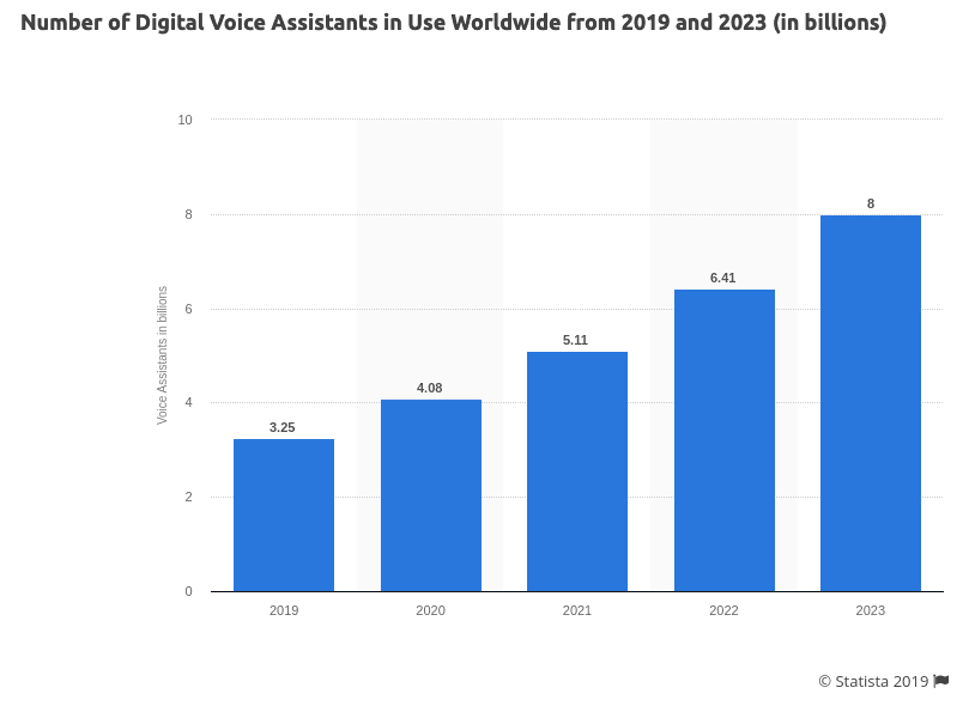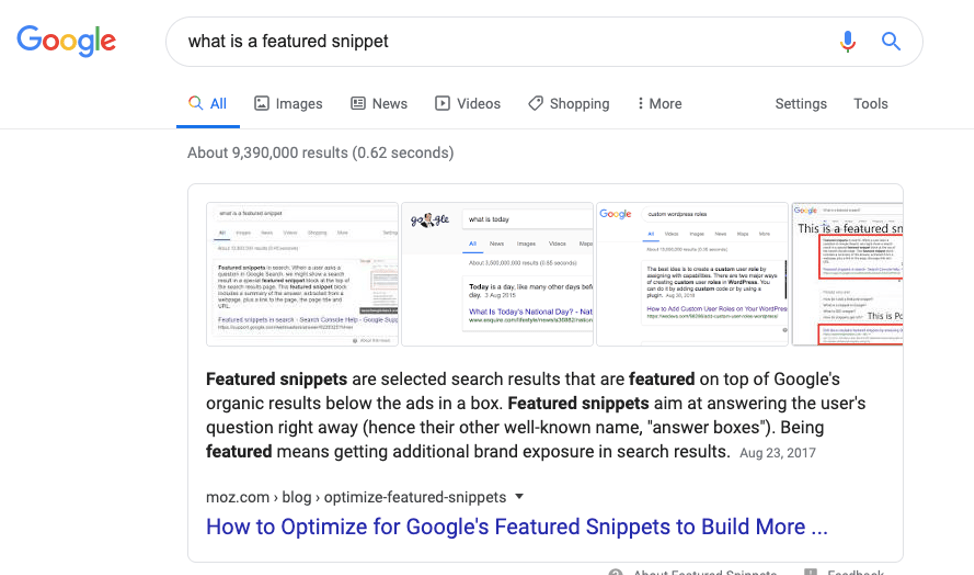SEO isn’t something you do for your website once and forget, but something you need to tweak continually. Use these 7 steps to help get a better handle on your SEO management in 2020.
With the number of Google searches surpassing 5.4 billion a day and 2 trillion a year, SEO strategy remains essential in 2020. According to Google, 51% of smartphone users have discovered a new product or company when conducting a search on their smartphones. Showing up in organic search results matters. With search evolving due to technologies like voice search, it’s up to marketers to navigate the changes and evolve their SEO strategy, too.
SEO is an ongoing process. These seven SEO management steps are easy enough to do yourself. They’ll go a long way toward not only improving your search rankings but also protecting your site against Google penalties.
1. Optimize for Voice Search
The number of searches done by voice continues to increase. According to Statista, the amount of digital voice assistants in use worldwide is projected to increase from 3.25 billion in 2019 to 8 billion in 2023.

Voice search is more conversational than typed-in search, which means you need to rethink how you create content. A study by Backlinko points out:
- Voice search is easy to understand: The average voice search results on Google is written at a 9th grade level.
- Voice search results prefer longform content: The average word count of a search results page on voice search is 2,312 words.
- Rank for keyboards, rank for voice: Around 75% of voice search results rank in the top 3 search results on desktop.
To achieve more voice search results and give your overall SEO a boost, include short questions and short answers to them within your website and content. You can achieve this with an FAQ page on your site or FAQ sections within long-form articles. You should also use more conversational language within content.
2. Make Your Images Searchable
Get more potential search results by optimizing the images on your website for Google search. In 2018, Google Images accounted for nearly 22.6% of internet searches, according to SparkToro. Now, images will appear right at the top of a search engine results page along with the web pages, or they’ll appear directly in search results. Click on an image, and you can then go directly to the site hosting it or see all the other images related to a search.


Make sure every image on your web page has a keyword-friendly description and appropriate tags. If you’re not using a lot of images on your site, integrate more of them and optimize them appropriately.
For ecommerce sites, product photo optimization is vital. Create a product description content strategy that is SEO-focused. That means in-depth, original descriptions that enhance the user experience and provide content searchers are interested in. More on that below.
3. Rank for Rich Snippets and the People Also Ask Box
Rich snippets are Google search results that have additional data displayed. It could be a search result that shows an entire recipe, or lists out an answer to a question.
Some people will never click through to a link when a rich snippet provides all the information they’re looking for. But one study found a 516% increase in page sessions due to featured snippet location, while the clickthrough rate jumped from 2%-8% and organic visitor revenue increased by 677%.

The “People Also Ask” box on the Google search engine results page works similarly. A list of related questions to a query will pop up. Click on a related question, and a snippet and link providing more information will show up.

To get in these areas of Google results, again, write out questions and answers throughout your copy. The added benefit is that as you work to rank in these areas, you’re also boosting your voice search strategy, and vice-versa.
4. Fix Your Penalties
You should constantly be monitoring your website search performance to identify dips in traffic and potential causes. Avoiding Google penalties should be at the top of your SEO strategy playbook for 2020. From lost rankings and revenue to a tarnished reputation, Google penalties are a significant problem.
The main focus to avoid Google penalties is quality. Google wants to provide the best user experience in its search results. That means avoiding rewarding websites that have done the following:
- Automatically generated content
- Participating in link schemes (spam, buying cheap links, unnaturally manipulating anchor text, etc.)
- Creating pages with little or no original content
- Adding hidden text or links to pages
- Loading pages with irrelevant keywords
Do one of these, and you might be hit with an algorithmic penalty that pushes your brand down the search results. Or, you might be sent a manual penalty by the Google team.
If you haven’t received a manual penalty notice but you think a penalty may have occurred, check in with your Google Analytics (more on that below) to see if there have been sharp traffic decreases for certain pages or your overall site. You may also notice that your rankings have suddenly dropped. Talk with your SEO team to investigate the issue and work on rebuilding rankings. Sometimes the answer is as simple as some broken links on your website. Other times, it’s a result of spammy content strategy that got you in trouble.
Some ways to overcome a Google penalty include:
- Linking out to other trustworthy, authoritative websites. Don’t shy away from linking to other sites that are legitimate resources. This is a natural, trustworthy behavior, so long as you do it naturally.
- Ensuring your website has a privacy policy and terms. Spammy sites tend not to have these.
- Keeping an eye on your bounce rate. Your on-page interaction matters, and if people are leaving your site in droves, you’d be wise to start digging into the reasons why and improving your user experience.
- Building brand signals. Are you being linked to using links that contain your brand name? Does your domain name use your brand name, or is it something generic? You can also make sure you’re acting like a brand by having a robust “About Us” section and linking up your (active) social profiles.
- Build trustworthy links. You are the company you keep online. If other legitimate sites are willing to link to you, this is a big sign to Google that you’re trustworthy, too.
In some cases, your current SEO agency may be directly to blame for the penalty. The party you’re working with should be able to provide clear answers on why you may have received a penalty.
5. Write New Product Descriptions for Your E-Commerce Pages
If you’re like a lot of business owners with an online store, you may have copied and pasted manufacturer product descriptions into your product pages. These descriptions may contain useful, detailed content, but there’s just one problem: Google often counts copied product descriptions as duplicate content.
Duplicate content sends a negative on-page search signal to Google, and it can result in your site getting penalized. This year, rewrite your product descriptions, or hire a content marketing company to do it for you. Make sure to incorporate the keywords you want each page to rank for.
6. Super-Charge Your Content Marketing Strategy
Blog posts and other forms of content, like videos with transcripts, deliver a megadose of good SEO juice for your business website. According to Demand Metric, content marketing costs 62% less than traditional marketing and generates 3x as many leads per $1 spent. Blogs allow for:
- Fresh content. Sites that regularly update with new content perform better in search rankings.
- More keywords. Blog posts built around your keywords give your site more opportunities to rank.
- Inbound links. When you write and share a great blog post, a good website might link back to it. The more inbound links your site has, the better your search ranking potential.
The more consistent you are in posting, no matter how far apart, the better for your readers. The more you post high-quality content, the more business value your blog will deliver. As a timesaver and as a way to publish more often, create a content calendar with ideas based on your customers’ most frequently asked questions and on topics that branch off from your top-performing content. Then, hire a content marketing company to finish the job. You can also look into guest bloggers to boost your blog and its value even more.
You should also build more trust and authority in your business through your company’s own guest blogging efforts. Develop ideas for guest posts, and have your content team pitch them to the blog editors:
- Visit the blog’s home page and look for links that say “Write for Us,” “Submit,” or “Contact Us.”
- Follow the directions for submitting your idea — keep it short and succinct. If the blog has submission instructions or submission guidelines, follow them to the letter.
- Link back to one of your pages, whether it’s a blog post, a landing page, or a services page. Include links to your social networks in the author bio.
- Promote your post when the blog publishes it by sharing it on your social networks or announcing it in your own blog.
If you’re already blogging regularly, start planning more longform content pieces. Research shows longform content, at 2,000 words or more, outperforms shorter content in search rankings.
7. Put Google Analytics to Work
Google Analytics is a free tool that lets you monitor how your web pages perform. It’s an easy way to monitor whether your SEO management efforts are getting results. You’ll need to add some small snippets of tracking code to each page of your site. The easiest way to do this is by using Google Tag Manager.
A Quick Look at Google Tag Manager
Google Tag Manager lets you add many different tags to your web pages, including both Analytics tags and AdWords tags. You can add Analytics tags to individual pages — and you may already have some in your pages — but Tag Manager provides a centralized, easy-to-manage container for all of your tags.
If you use WordPress, WPBeginner has written a fantastic tutorial for installing Google Tag Manager on your web pages. If you’re not using WordPress, and you’re comfortable editing your HTML, this step-by-step video from Google will explain how to install Tag Manager:
Again, always talk to an SEO agency or developer if you’re not comfortable editing code on your site.
Why Google Analytics Matters
Once your tracking code is set up, you’ll be able to see which pages attract the most visitors, how visitors travel between pages and how people are using your site. If you want to look at what visitors do when they’re on the page, try installing some heat map software.
Need Expert Support?
If SEO management sounds too overwhelming, or if you need some help getting started, schedule a free one-to-one consultation with an SEO agency to get help with your website.


